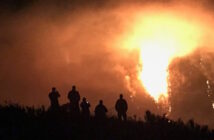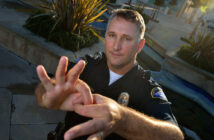Run. Hide. Fight.
During a time when the chances of an active shooter in the workplace seems more prevalent than ever, those three edicts, if followed, can dramatically increase the chances for survival, said Tustin PD Detective Eric Haug as he recently led an active shooter safety workshop for civilian department employees. He provided information on how civilian employees can protect themselves and others in the event of an active shooter.
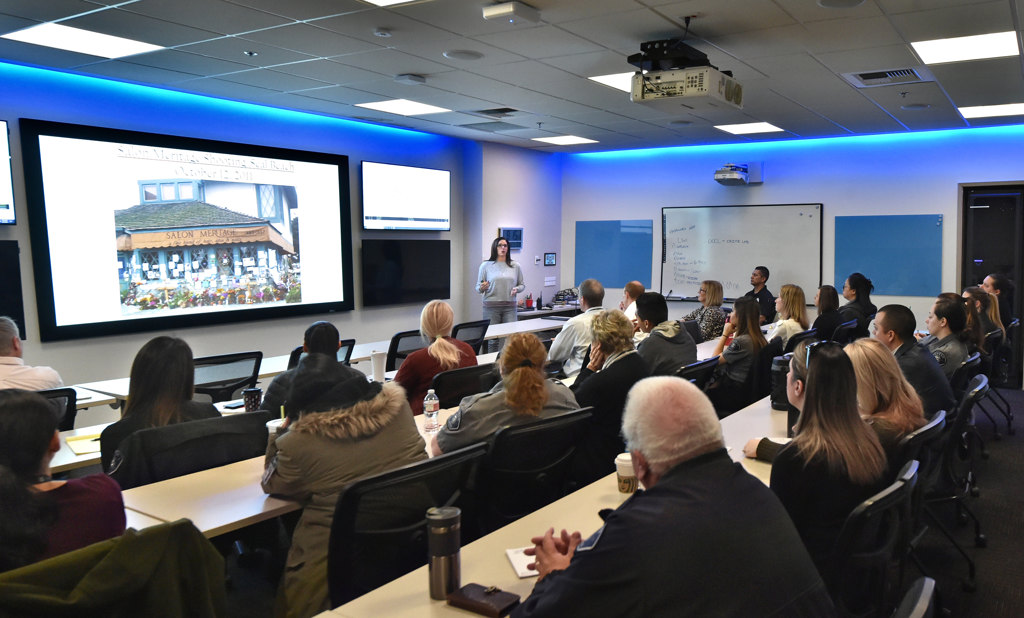
Heather Williams, founder of Premier First Responder Psychological Services, talks about the psychological impact events like the Seal Beach shooting have on people and first responders.
Photo by Steven Georges/Behind the Badge
Haug drove the point home again and again as he drew from lessons learned from past incidents such as the shooting at Columbine High School in Colorado in 1999, the Mandalay Bay shooting in Las Vegas in 2017, the 2012 Sandy Hook School shooting in Connecticut, and the 2015 San Bernardino shooting.
The order in which you run hide and fight is not written in stone, Haug said, and could depend on the situation.
In the Las Vegas shooting, for example, terrified concertgoers hid behind the stage.
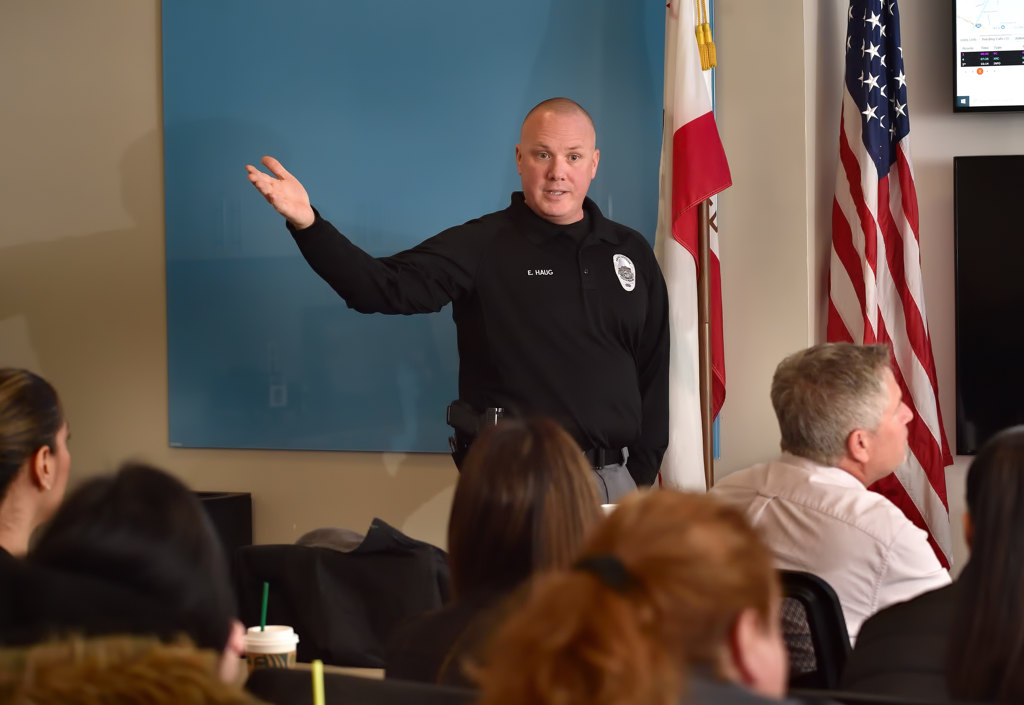
Tustin Police Detective Eric Haug conducts an active shooter civilian training class for employees at the Tustin Police Department.
Photo by Steven Georges/Behind the Badge
They started taking gunfire and then chose to run as the next option.
“The further you can get away from the problem, the better off you’re going to be,” the detective said. “Don’t worry about your cell phone. Don’t worry about your purses. Everything is replaceable, but not your life.”
But if running is not an option, hiding could be the next viable choice, Haug said.
Visualize escape routes ahead of time so you’re not running around blindly.
“Try to get your wits about you and say, ‘Where am I going to go and how am I going to get out of this safely?’” he said.
There may be other situations where hiding is the best option.
If so, try to find a barrier that can stop bullets, Haug said.
Lock or barricade the door to at least slow the shooter down, Haug said. Shut off the lights to make it look like nobody is there.
“Let’s create those levels of security,” he said. “You need to keep that survival mindset.”
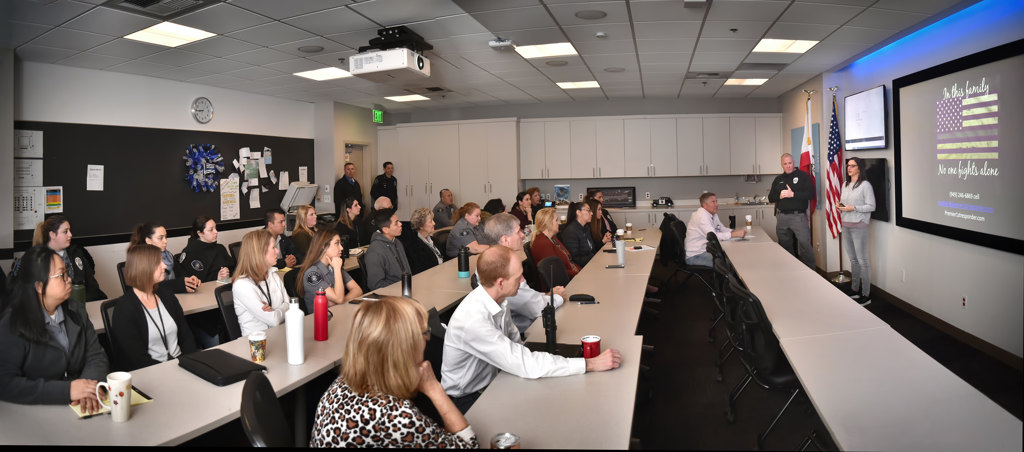
Tustin Police Detective Eric Haug and Premier First Responder Psychological Services founder Heather Williams conduct an active shooter civilian training class for employees at the Tustin Police Department.
Photo by Steven Georges/Behind the Badge
If fighting is an option, keeping the survival option is imperative.
“Identify weapons. A shovel. A stapler. A fist. Anything,” Haug said.
“Don’t be afraid to engage,” the detective said. “You’re saving lives. You’re saving yourself. If we have to fight, fight.”
Police response to active shooter scenarios has also changed in recent years.
In the past, first responders might wait for what they see as the best time to enter the building where the shooter is located.
Citing the Columbine shooting, where 12 students and a teacher were shot and killed, Haug said first responders waited too long before entering the school.
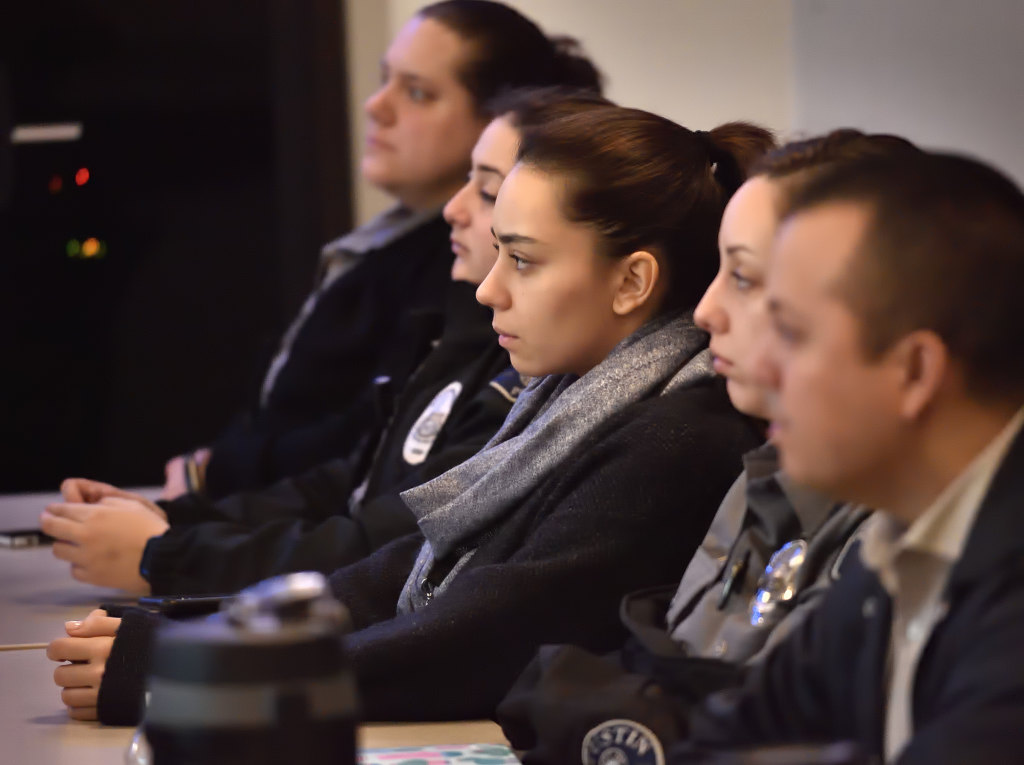
Employees attend an active shooter civilian training class put on by the Tustin Police Department.
Photo by Steven Georges/Behind the Badge
“On school shootings, especially, we’ve learned that the faster we can get in there, the better,” Haug said. “Back in the day, we trained to wait for a three-person team, or four-person team and go in as a diamond … Now, it’s first cop there, get your gun and get in there.”
The second part of the workshop, led by psychologist Heather Williams, focused on the lingering trauma experienced by survivors of active shooter situations, particularly by first responders.
Williams, a former regional peer support coordinator with the Orange County Sheriff’s Department now in private practice, has worked with victims of violent crimes along with first responders who’ve responded to mass shootings and have been involved in violent and traumatizing scenarios.
“When the shooting stops, is that the end of the incident or has it really just begun for everybody who’s involved?” Williams asked rhetorically. “It really is just the beginning and so one of the things that I set out to do was to talk about the aftermath to not only prepare you to run, hide and fight, but to also prepare you for what comes in the aftermath because as human beings we have normal responses to trauma that we need to acknowledge.”
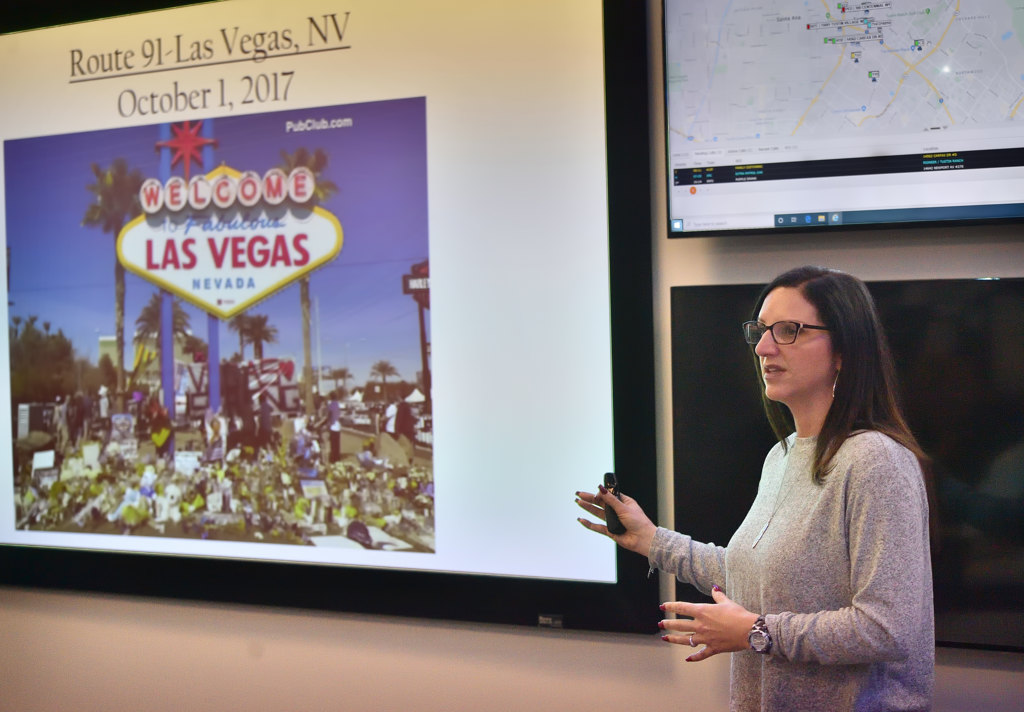
Heather Williams, founder of Premier First Responder Psychological Services, talks about the Las Vegas shooting, the Seal Beach shooting, and others as she speaks on the psychological effect events like those have on survivors.
Photo by Steven Georges/Behind the Badge
You cannot unsee what you’ve seen, Williams said, or unhear what you’ve heard.
Physical and psychological responses to traumatic events can include digestive problems, sleep disturbances, flashbacks, impatience, difficulty concentrating, or getting angry easily, Williams said.
So letting first responders know in advance what they may expect to experience in the wake of a traumatic incident such as a mass shooting is critical — as is knowing it’s OK to talk about the trauma and seek outside help, she said.
“I think that it’s important because we need to front-load for people to know what to expect in the aftermath, not only how to survive one, but how to survive one physically and mentally and psychologically,” Williams said. “I think because these events are life-changing and if we have learned to make it normal and OK for people to have a reaction, we’re building a more resilient community rather than having people walk around psychological injury.
 Behind the Badge
Behind the Badge

